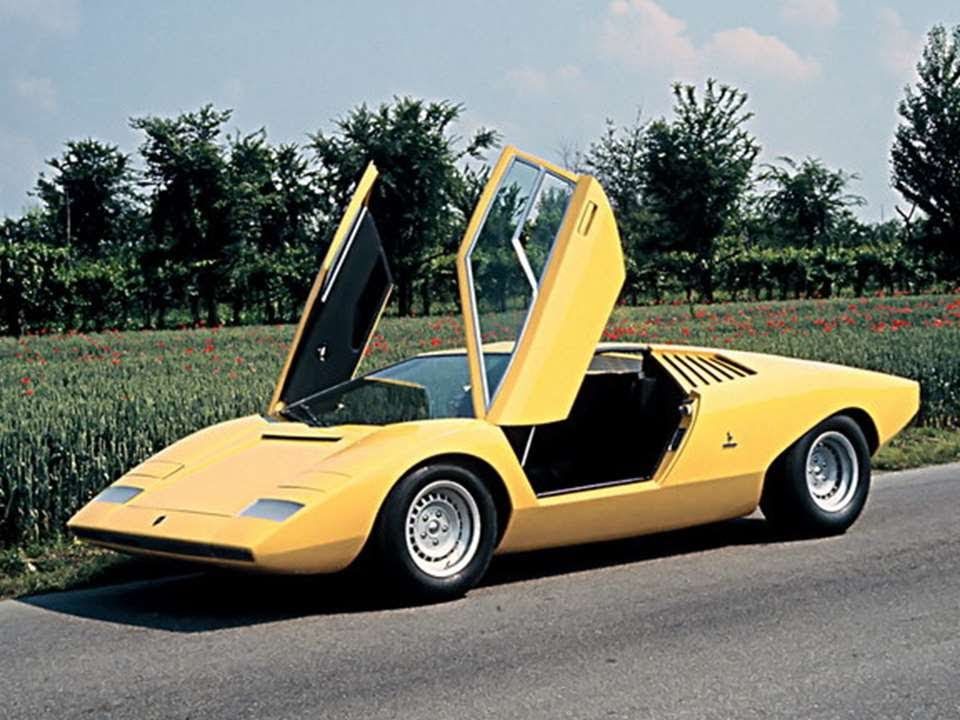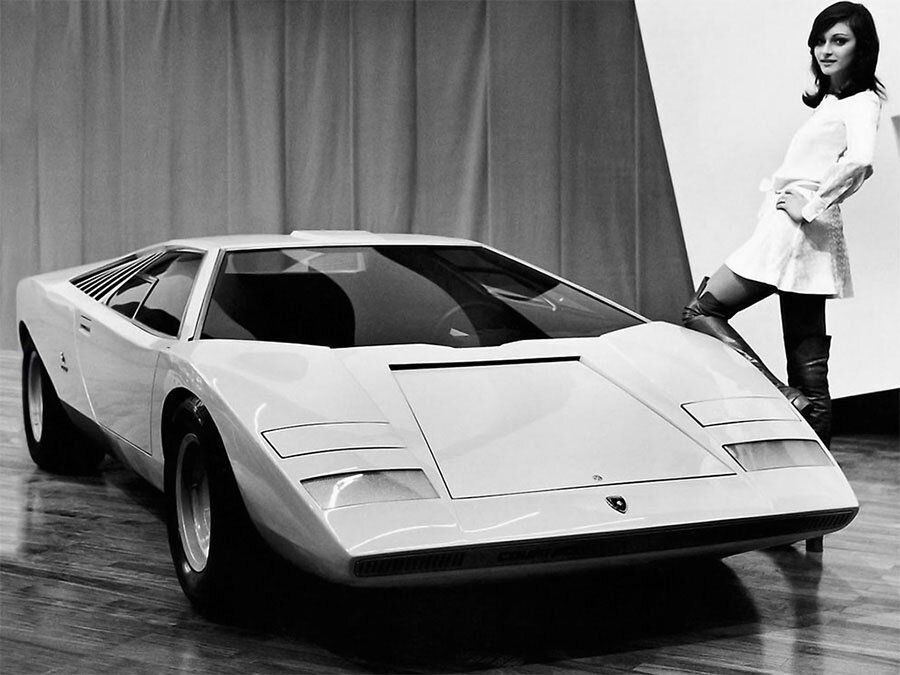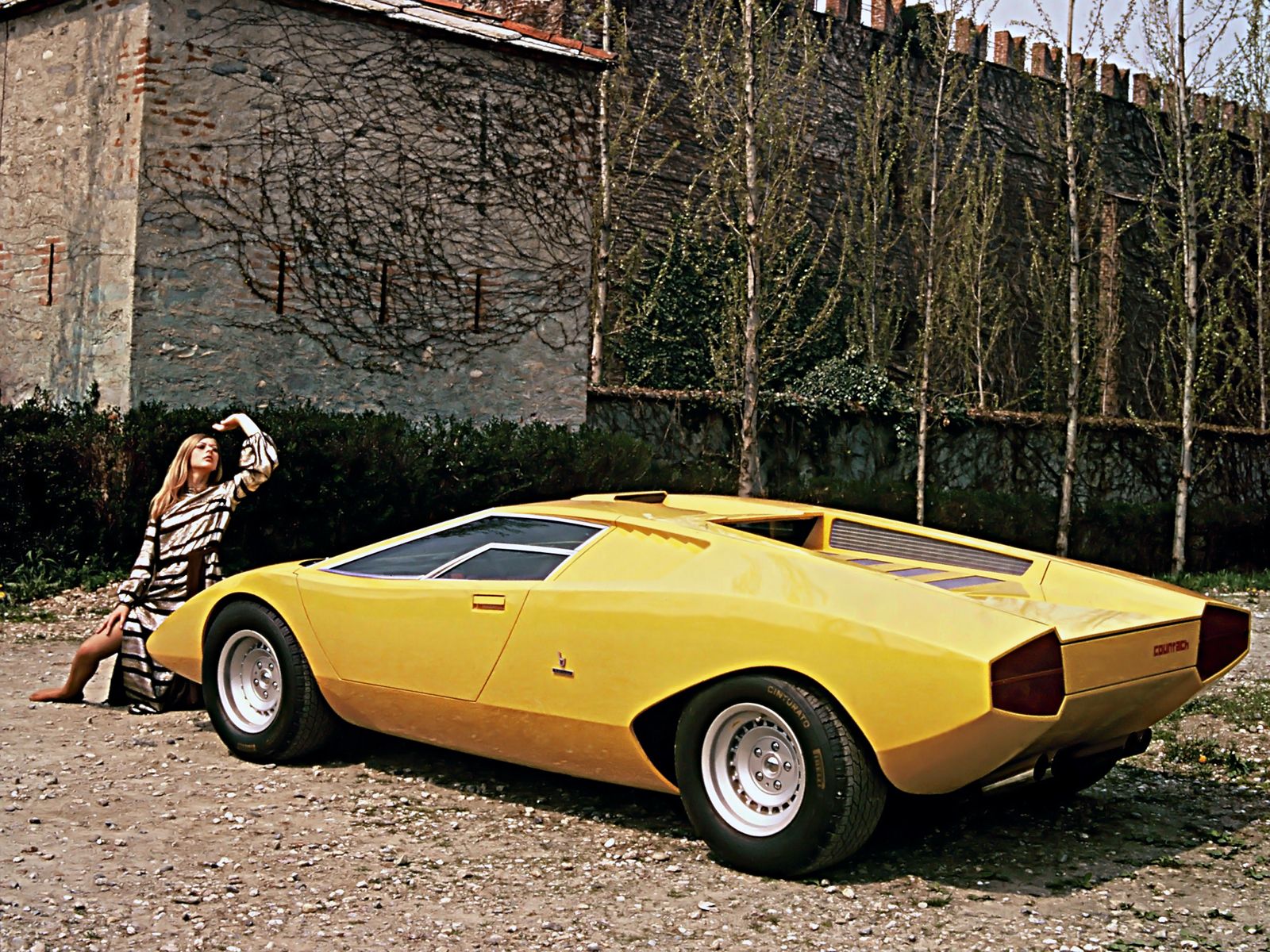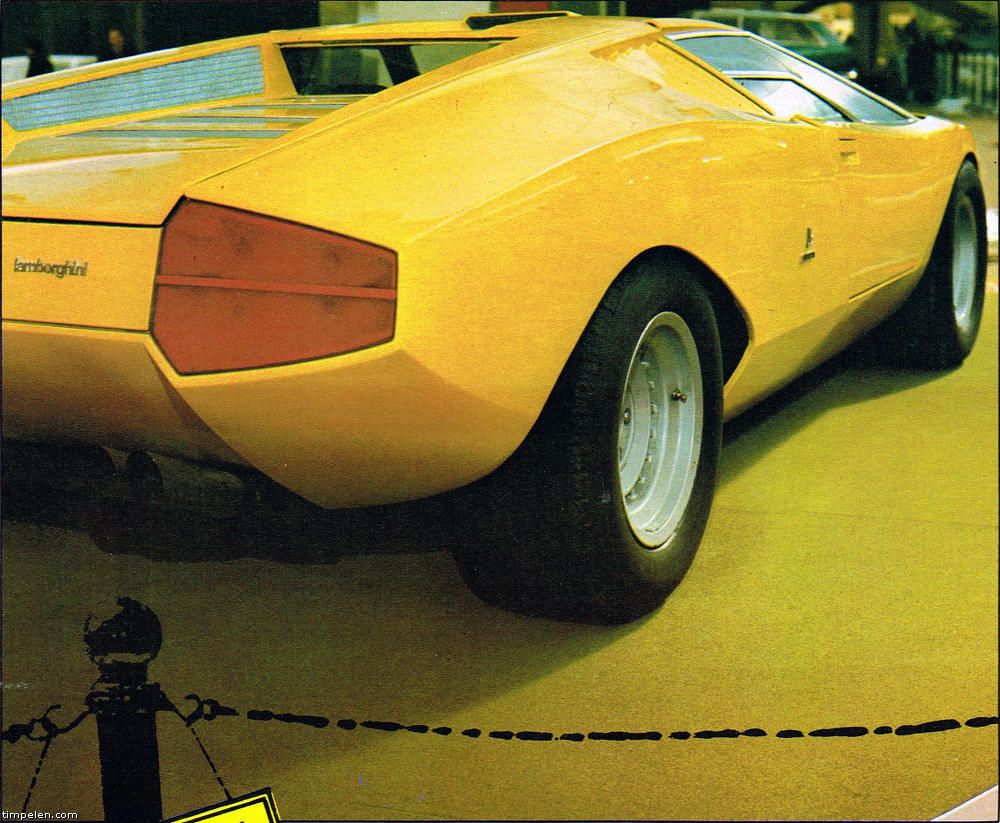
The history of the Lamborghini Countach On the occasion of the great return of the Lamborghini Countach LPI 800-4 model
Last week, the legendary Lamborghini Countach made its return after thirty-one years of absence from the catalogs with the new Countach LPI 800-4 model. The Sant'Agata Bolognese company had stopped production of the supercar in 1990 after presenting it at the Geneva Motor Show for the first time back in 1971 – a twenty-year period during which the Countach had become an icon of Italian automotive design, made famous by its cuneiform silhouette and its vertically opening doors.
Today, the new model is different from the original one: hybrid V12 engine with a total power of 814 horsepower, maximum speeds of 355 km/h, wheel arches decorated with hexagons, elimination of ailerons and integration of airscoops. Nevertheless, this new Countach model is almost entirely based on the heritage left by the famous Countach models produced in the past and become a piece of pop culture.
How was the Countach born?
Designed by Marcello Gandini for Bertone in '71, the main characteristic of the Countach was, at the time, its absolute and almost futuristic simplicity. The almost flat surface of the front; the lenticular, arched geometry, which characterized all the subsequent models; the cuneiform shape with retractable headlights, almost sharpened on the hood – all the characteristics of the car were the fulfillment of the evolution of a design language that the Bertone Group had already carried out in previous years with cars such as the Lancia Stratos Zero, the Chevrolet Testudo and the Alfa Romeo Carabo and carried on in the following years with the Ferrari Rainbow, the Lamborghini Athon and the Lancia Sibilo. Aerodynamics, sharp edges, arched shape, flush or retractable headlights: this was the idea of supercars in the 70s, aggressive and hypergeometric.
The model designed by Gandini was both very simple in its elementary use of geometries but also subtly over-the-top with the doors that opened upwards that Ferruccio Lamborghini liked so much, the huge windshield, the compact volume, the reduced height and the sharp front. Some changes were necessary when the model went into production in 1973 with the Countach LP400, such as a tubular and non-self-supporting chassis, a four-liter engine instead of a five-liter one, the conveyors on the back for the radiator, the height of the front and above all the insertion of an internal rather than an external rear-view mirror – present instead in the prototype. In the following years the essentiality of the original design was modified with the addition of ailerons, fenders, aerodynamic elements and changes to the hood that made it lose the rigorous geometry of the original, however impossible to replicate on the production level, in favor of increasingly high performance. Twenty-five years ago, however, production of the Countach was stopped, until today, the year in which Mitja Borkert and the Lamborghini team have made it return to production, with further modifications.
The myth of a car
Never before has our imagination been fascinated by the forms of the past. And classic cars, especially the angular '70s models, have made their return almost everywhere on Instagram riding the wave of vintage moodboards and successful models like Tesla's Cybertruck. Specifically, the Countach became famous thanks to cult films such as in the trilogy of Cannonball Run in the World, in which she is the protagonist of an amazing opening sequence that immortalized her as a symbol of the carsplotation genre – that is, all those films based on the long chases and stunts at the wheel of which the Fast &Furious saga is the most recent descendant. In addition, the Countach became a model loved by collectors such as Mario Andretti, Gerhard Berger and Rod Stewart.



























































